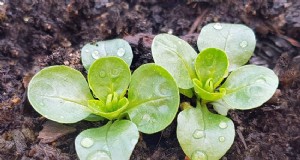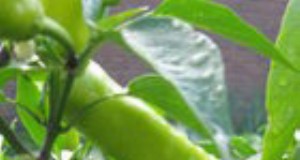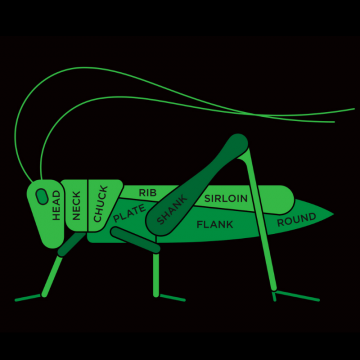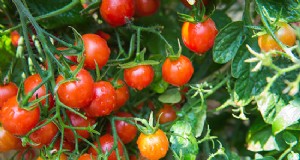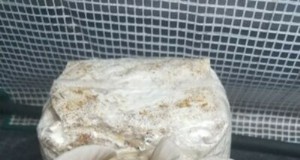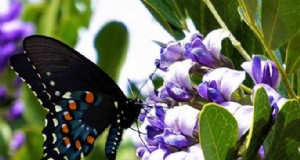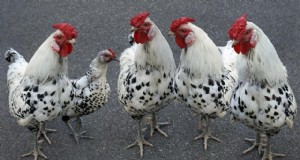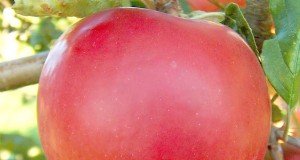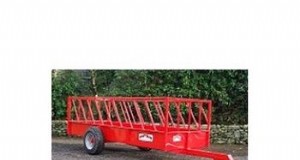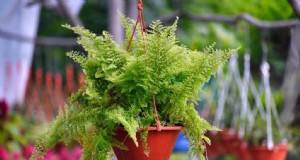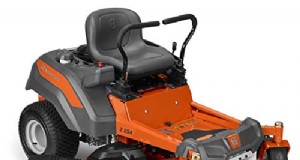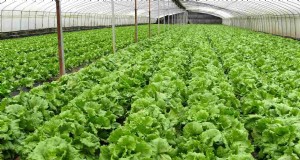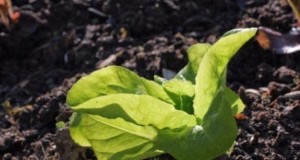Salah satu fitur yang paling penting dari budidaya ikan adalah bahwa ikan harus memiliki makanan yang baik. Pemberian pakan dan pemupukan bersama membuat budidaya tambak berhasil. Pertumbuhan ikan di tambak berhubungan langsung dengan jumlah makanan yang tersedia di tambak. Kolam harus menyediakan semua makanan dan nutrisi yang dibutuhkan ikan. Tapi semua ikan tidak membutuhkan jenis makanan yang sama, untuk spesies yang berbeda memakan berbagai jenis makanan, ikan juga memakan makanan yang berbeda tergantung pada tahap siklus hidup mereka.
Tukik yang baru menetas menyerap pakan dari yolk sac sampai kuning telur di dalam yolk sac habis. Goreng memakan fitoplankton terkecil di kolam. Ikan dewasa memakan jenis makanan tertentu yang disukai ikan plankton, gulma air, cacing, larva serangga, dll.
Seiring berkembangnya teknologi budidaya, ada kecenderungan hasil yang tinggi dan pertumbuhan ikan yang lebih cepat. Perlu untuk meningkatkan pasokan makanan dengan pemupukan, melengkapi makanan dengan pakan buatan atau menyediakan semua nutrisi untuk ikan di lahan budidaya. Karena ikan menjadi kurang bergantung pada organisme makanan alami dan lebih bergantung pada makanan buatan, kebutuhan nutrisi pakan buatan menjadi perlu.
Dengan kemajuan teknologi budidaya ikan, metode budidaya ikan mas ekstensif secara bertahap telah bergeser ke arah metode budidaya intensif. Ikan awalnya hidup hanya pada produk alami kolam untuk pertumbuhan, reproduksi dan kesehatan. Di habitat pertanian, memberi makan populasi yang ditebar dengan diet uji kualitas dan nutrisi yang seimbang sangat penting untuk memastikan proses biologis dan fisiologis serta produksi yang optimal. Namun, pakan uji dikeringkan, setengah kering, lembap, diet enkapsulasi atau partikulat. Diet kering termasuk diet yang berasal dari tumbuhan murni, makanan jaringan hewan, makanan campuran atau formula.
Pakan majemuk harus mengandung tingkat nutrisi yang cukup untuk memenuhi kebutuhan fisiologis organisme seperti energi, pembentukan tubuh, memperbaiki atau memelihara sel, jaringan dan mengatur proses tubuh. Menurut Halver (1976), setiap diet senyawa gizi seimbang harus mencakup sumber energi dengan asam amino esensial yang cukup, asam lemak esensial dan nutrisi non-energi untuk mempertahankan dan meningkatkan pertumbuhan. Setiap ketidakseimbangan nutrisi ini dapat menunjukkan tindakan hemat yang akan mempengaruhi kemanjuran konversi makanan oleh organisme. Kebutuhan nutrisi spesifik ikan sangat bervariasi menurut spesies, ukuran, kondisi fisiologis, suhu, menekankan, keseimbangan nutrisi dari diet dan faktor lingkungan. Karena itu, pemrograman konstituen nutrisi harus dilakukan untuk mendapatkan ransum majemuk yang paling ekonomis untuk ikan.
Pengetahuan yang berkaitan dengan kebutuhan nutrisi dasar ikan berasal dari usaha manusia untuk memelihara ikan untuk makanan dan untuk ditebar di danau dan sungai. Dalam praktik budidaya ikan intensif, tujuannya adalah untuk mempertahankan kepadatan ikan yang optimal per satuan luas perairan dengan mengadopsi teknik yang berkaitan dengan polikultur, banyak kaus kaki, manipulasi stok dll. Dalam kondisi budidaya ikan seperti itu, komponen protein alami organisme makanan yang ada di lingkungan tidak akan memenuhi kebutuhan biomassa ikan yang sedang tumbuh, sehingga memerlukan suplementasi dengan pakan kaya protein. Karena ada persaingan ketat makanan protein terutama untuk konsumsi manusia, ide untuk memberi makan jenis makanan seperti itu kepada semua spesies yang dibudidayakan. Ikan tidak terdengar sangat ekonomis. Ada makanan tertentu yang tidak dikonsumsi oleh manusia seperti protein nabati, jerami biji-bijian yang dikutuk, jerami, sisa atau makanan manusia, oleh produk dan limbah dari industri, protein sel tunggal dll. Untuk mencapai perkembangan progresif dari industri budidaya ikan, zat tersebut dapat digunakan untuk persiapan pakan ikan buatan setelah melakukan eksperimen yang tepat.
Pengembangan pakan buatan terutama bergantung pada studi yang berkaitan dengan nutrisi dasar dan fisiologi. Untuk alasan ekonomi penyelidikan tersebut harus bertujuan untuk mengetahui tingkat minimum protein yang memenuhi persyaratan asam amino dari spesies untuk kapasitas inheren yang optimal untuk pertumbuhan, suplementasi yang cukup oleh karbohidrat untuk melayani sebagai kalori makanan dan pasokan vitamin dan mineral yang mewah untuk stimulasi yang diperlukan dari pencernaan protein.
Informasi mengenai kebutuhan nutrisi ikan air hangat tidak tersedia kecuali ikan lele yang ransum lengkapnya telah dirumuskan dan persyaratan dietnya telah dipelajari. Namun, Pentingnya pemberian pakan kaya protein pada ikan mas telah disadari mengingat tingginya hasil yang diperoleh. Telah ditetapkan bahwa makanan alami hanya memainkan peran dan tidak signifikan. Hasil yang diperoleh dengan memberi makan ikan mas dalam praktik air mengalir dan terbatas, di keramba dan pelampung telah mengungkapkan bahwa ikan mas dapat tumbuh dengan baik bahkan tanpa makanan alami dengan memberi makan dengan berbagai jenis pakan tambahan.
n A tur A aku fis H F oo D Hai R gan Saya S M
Berbagai organisme makanan ikan alami ditemukan di badan air, yang tergantung pada sifat nutrisi dari badan air. Makanan alami menyediakan konstituen dari diet lengkap dan seimbang. Permintaan makanan alami bervariasi dari spesies ke spesies dan kelompok umur individu. Misalnya catla lebih suka zooplankton dan ikan mas perak lebih suka fitoplankton. Pada tahap yang lebih muda; ikan dapat memakan plankton, dan ikan yang sama mungkin lebih menyukai makanan hewani sebagai ikan dewasa. Ikan memakan organisme makanan alami yang berbeda pada semua tingkat trofik yang berbeda. Pakan alami memiliki kandungan protein dan lemak yang tinggi, yang mendorong pertumbuhan ikan. Karenanya, perlunya peningkatan pakan hidup pada ekosistem perairan untuk meningkatkan pertumbuhan ikan.
C aku assi F saya kucing Saya Hai n Hai F foo D NS D F e edin G H A sedikit S Hai F fi S dia S
Penulis yang berbeda telah mengklasifikasikan makanan alami dan kebiasaan makan ikan (Schaprclas, 1933).
1. Makanan utama :Ini adalah makanan yang paling disukai dimana ikan akan berkembang biak dengan baik
2. Makanan sesekali :Memiliki nilai gizi yang relatif tinggi dan disukai dan dikonsumsi oleh ikan setiap kali ada kesempatan.
3. Makanan energi:Diberi makan/diterima ketika bahan makanan lain tidak tersedia.
Nikolsky (1963) mengenali 4 kategori utama makanan berdasarkan pentingnya mereka dalam diet ikan.
Makanan dasar:Biasanya dimakan oleh ikan dan terdiri dari sebagian besar isi usus.
1. Makanan Sekunder :Sering dikonsumsi dalam jumlah yang lebih sedikit.
2. Makanan insidental :Jarang dikonsumsi.
3. Makanan wajib :Ikan mengkonsumsi makanan ini tanpa adanya makanan pokok.
Berdasarkan sifat makanannya, Das dan Moitra (1963) mengklasifikasikan ikan menjadi 3 kelompok utama. x
1. Ikan herbivora:Mereka memakan bahan tanaman, yang membentuk lebih dari 75% isi usus.
2. Ikan omnivora :Mereka mengkonsumsi makanan nabati dan hewani.
3. Ikan karnivora :Mereka memakan makanan hewani, yang terdiri dari lebih dari 80% dari diet.
Herbivora dibagi menjadi 2 sub-kelompok.
A. Ikan planktophagous :Mereka hanya mengkonsumsi fito- dan zooplankton
B. Ikan detritophagous:Mereka memakan detritus.
Omnivora juga dapat dikelompokkan menjadi 2 kategori.
A. Herbi-omnivora :Ikan lebih banyak memakan bahan tumbuhan daripada makanan hewani,
B. Cami-omnivora :Ikan lebih banyak memakan makanan hewani daripada bahan tumbuhan.
Karnivora juga diklasifikasikan menjadi insektivora (pemakan serangga), karsinofagus (memakan krustasea), malacophagous (memakan moluska), piscivorous (memakan ikan lain), dan larvivorous (memakan larva). Beberapa ikan bersifat kanibal.
Ikan mengkonsumsi berbagai bahan makanan, seperti fitoplankton, zooplankton, gulma air, hewan seperti Annelida, arthropoda, moluska, ikan dan amfibi lainnya.
tolong A nkto n
Produksi ikan di badan air secara langsung atau tidak langsung tergantung pada kelimpahan plankton. Sifat fisiko-kimia air menentukan kualitas dan kuantitas plankton. Dengan demikian, selama mempelajari plankton, sebuah mata rantai dalam rantai makanan merupakan prasyarat untuk memahami kapasitas badan air untuk mendukung perikanan dan kebutuhan untuk pengenalan spesies ikan terpilih yang penting secara komersial. Dua kategori kehidupan lainnya dalam suatu ekosistem adalah benthos dan neckton. Benthos adalah istilah yang diberikan untuk kehidupan di bawah, seperti cacing tanah air, larva serangga dan ikan tertentu. Neckton termasuk hewan berenang yang lebih besar seperti ikan. Plankton sangat penting bagi banyak ikan sebagai makanan. Pertumbuhan ikan pemakan plankton sebagian besar bergantung pada dinamika plankton di badan air. Plankton selanjutnya dibagi menjadi dua kategori utama - fitoplankton dan zooplankton.
P H yt Hai tolong A nkt Hai n :
Ikan mengkonsumsi fitoplankton, yang banyak ditemukan di kolam yang dikelola dengan baik. Fitoplankton memberikan warna hijau pada air karena adanya klorofil. Fitoplankton umumnya terdiri dari sebagian besar ganggang uniseluler yang baik soliter atau kolonial. Fitoplankton bersifat autotrof, yaitu., mereka memperbaiki energi matahari dengan fotosintesis menggunakan CO2, nutrisi dan air. Fitoplankton menempati dasar rantai makanan dan menghasilkan bahan makanan di mana organisme lain dalam ekosistem menopang diri mereka sendiri. Fitoplankton hanyut karena belas kasihan gerakan angin dan air. Alga terdiri dari tiga kelas utama yang merupakan makanan utama fitoplankton (Gambar 6.1). Ini adalah chlorophyceae, cyanophyceae dan bacillariophyceae.
A . Chlo R Hai phyceae :
Ini disebut ganggang hijau karena adanya klorofil. Banyak anggota chlorophyceae yang berguna sebagai makanan bagi ikan. Organisme ini tersebar di seluruh kolam. Anggota chlorophyceae yang berguna sebagai pakan ikan adalah Klamidomona. Volvox, Eudorina, Pandora, Chlorella. ganggang berfilamen seperti Ulothrix, Oedogonium, Spirogyra, Pediastrum, Mikrospora, Cladophora, Clostrdium, adegandesmus, Kosarium. dll.
B . C kamu anof kamu ceae : Ini juga disebut sebagai myxophyceae dan umumnya dikenal sebagai ganggang hijau biru. Warna ini disebabkan oleh proporsi klorofil a yang bervariasi. karotenoid dan biliprotein. Produk fotosintesis adalah pati cyanophycean, hadir dalam bentuk granular. Dinding sel kekurangan selulosa dan sebaliknya terutama terdiri dari asam amino dan gula amino. Banyak anggota cyanophycean yang dikonsumsi oleh ikan. Ini adalah Nostoc, Oscillotoria, Anabaena, mikrosistis, Spirulma. Merismopedia, Artrospira, dll. 1.2.1.3. Bacillariophyceae .-Ini disebut diatom. Mereka adalah organisme uniseluler dengan berbagai bentuk dan ukuran. Ini mungkin berwarna kuning atau coklat keemasan atau hijau zaitun. Pigmen diatomin otot emas hadir dalam diatom. Bahan makanan cadangan adalah lemak atau volutin. Diatom yang dikonsumsi oleh ikan adalah diatom. Navicula. kepompong, Synedra, Tabellaria, Meridian, Fragilaria, Nitzschia, Pleurosigma, Amfifilura, Rhizosolenia, Siklotela, Bejana Yunani, Melosi, Acwanthes, dll.
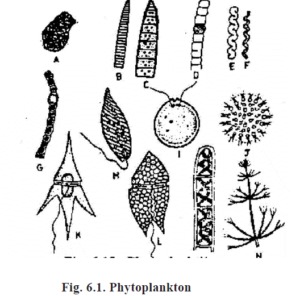
A )mik R ok masa lalu B &C ) Osci aku lato R , ! , D) Anabaena e &f) Spirulna B) Nostoc H) Euglena Saya) Chlomydomonas j) Volvox k) Spirogyra 1) Nitella.
Z oopla n kto n :
Plankton yang terdiri dari hewan disebut zooplankton. .Zooplankton berlimpah di daerah dangkal badan air. Zooplankton tidak seperti fitoplankton terutama didistribusikan secara horizontal dan vertikal dalam suatu ekosistem. Mereka juga menjalani migrasi vertikal diurnal. Zooplankton membentuk kelompok penting karena menempati posisi perantara dalam jaring makanan, banyak dari mereka memakan alga dan bakteri dan pada gilirannya diberi makan oleh ikan. Mereka juga menunjukkan status trofik badan air. Kelimpahan mereka meningkat di perairan eutrofik. Mereka juga sensitif terhadap polusi dan banyak spesies diakui sebagai indikator polusi. Di antara zooplankton, beberapa organisme kadang-kadang muncul dalam jumlah yang cukup besar membentuk kawanan. Kawanan ini terjadi di kolam air tawar membentuk pita atau garis, atau diatur ke dalam area konsentrasi tebal dan tipis. Simulasi efek awan, mereka mungkin memberi air warna yang sangat berbeda di wilayah kawanan. Organisme yang paling umum di zooplankton adalah protozoa, krustasea dan rotifier (Gbr. 6.2).
A . P ro T ozo A :
Protozoa paling primitif, hewan uniseluler dan mikroskopis. Organisme ini dilengkapi dengan organela gerak seperti pseudopodia, flagela dan silia. Organisme ini banyak ditemukan di kolam ikan dan berguna sebagai pakan alami ikan. Umumnya protozoa mendominasi dalam komunitas zooplankton. Protozoa pada umumnya adalah organisme bersel tunggal soliter. Pada beberapa dinoflagellata dan ciliata, individu anak tidak terpisah dan bersama-sama membentuk koloni semu selama pembelahan berulang. Koloni ini disebut koloni catenoid. Protozoa yang termasuk dalam kelas sarcodina, flagellata dan ciliata berguna sebagai bahan makanan bagi ikan.
Protozoa dengan pseudopodia termasuk dalam kelas sacrodina atau rhizopoda. Amuba dan Actinophrys sarcodines umum ditemukan di kolam ikan dan juga digunakan sebagai makanan oleh ikan dan udang sesekali.
Protozoa dengan flagela termasuk dalam kelas flagellata atau mastigophora. Euglena adalah organisme makanan ikan yang paling umum ditemukan di kolam ikan dan udang. E. viridis, E. spirogyra dan E. minuta adalah beberapa spesies penting yang digunakan sebagai makanan ikan. Ceratium, chilomonas dan phacus juga digunakan sebagai makanan ikan.
Protozoa dengan silia termasuk dalam kelas Ciliata. Di sini silia bertahan sepanjang hidup. Ciliata suka Paramecium, pusaran air. Colep, Colpoda. Metropus, Euplot. Oksitrika, dll. adalah organisme makanan ikan. Ciliata adalah organisme yang mendominasi di antara zooplankton.
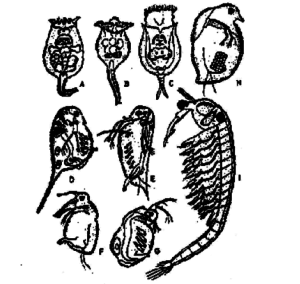
A ) B rahion kamu S P licatil Saya S B) B. ruben C) Euchlanis sp. D) daphnia cahnata (laki-laki) c) D. cahnata (perempuan) f) moina sp. (laki-laki) g) moina sp. (perempuan) h) Ceriodaphnia sp. (perempuan) saya) Artemia salina.
B . krustasea A : Hewan air dengan 19 pasang pelengkap dan respirasi brankial termasuk dalam kelas Crustacea. Krustasea bervariasi dari mikroskopis hingga hewan besar. Crustacea membentuk komponen utama zooplankton. Dalam zooplankton, microcrustacea berguna sebagai makanan untuk ikan dan udang. Microcrustacea yang penting adalah copepoda dan cladocera. Nauplii krustasea juga merupakan bahan makanan yang baik bagi banyak ikan dan udang. Sebagai contoh, nauplei dariArtemia digunakan dalam pembenihan udang.
a) Copepoda :Ini adalah hewan dengan 5 pasang pelengkap dada, perut tanpa pelengkap, telson bercabang, dua pasang antena dan tubuh dengan kepala, dada, dan perut. Copepoda menghuni banyak habitat air tawar seperti danau, waduk, kolam, dll. Banyak copepoda adalah pelagis dan begitu melimpah di plankton baik di daerah limnetik maupun litoral air. Hanya harpacticoids yang sebagian besar hidup bentik atau dasar. Ukuran tubuh copepoda adalah 0,3 hingga 3,5 mm. Copepoda seperti Cyclops, Mesocyclop, Diaptomus, Canthocamptus, dll berguna sebagai organisme makanan ikan.
b) Cladocera”:Hewan yang berbivalvia, perisai berbentuk dengan atau tanpa cangkang, pelengkap batang pipih dan gaya ekor seperti daun yang mungkin tidak bersendi atau bersendi termasuk dalam cladocera. Kelimpahan terbesar cladocera ditemukan di dekat vegetasi di danau, kolam, dll. Ukuran krustasea bercangkang ini bervariasi dari 0,2 hingga 3,0 mm. Para cladocera menyukai daphnia, Ceriodaphnia, moina, sinosefalus, Scapholebris, sida, Eurosen, hidor, Daphniosoma, Polifemus, Makroihrix. Leydigia, dll. berguna sebagai organisme makanan ikan.
c) Ostracoda :Hewan dengan karapas bivalvia, yang menyelimuti seluruh tubuh, 4-6 pelengkap batang dan batang yang dikurangi termasuk dalam ostracoda. Bentuk-bentuk ini terwakili dengan baik di perairan berdiri dan mengalir. Ini adalah bentuk eksklusif planktonik. Kadang-kadang ostracod suka Sipris, Stenocypris, et. dikonsumsi oleh ikan.
C . R kadang-kadang A : Rotifera mudah diidentifikasi dari bahan planktonik lain dengan adanya struktur seperti roda bersilia anterior mereka yang disebut korona dan karenanya mereka disebut animalcules roda. Rotifera hidup di berbagai habitat perairan. Mereka mikroskopis, mulai dari ukuran 40 mikron hingga 2,5 mm. Biasanya rotifera suka, Keratella, Phlodina, Rotary. heksana, Filipina, Brachionus Epifan, dll., berguna sebagai organisme makanan. Rotifera menawarkan beberapa keunggulan sebagai organisme pakan ikan. Mereka
1. Mereka berkembang biak dengan cepat, diperkirakan bahwa populasi dalam kondisi yang menguntungkan dapat berlipat ganda setiap satu hingga lima hari. Dalam kondisi laboratorium yang intensif, mereka baru-baru ini dilaporkan memiliki tingkat penggandaan kurang dari 9 jam.
2. Rotifera berukuran kecil dan oleh karena itu diterima sebagai makanan oleh beberapa organisme yang tidak dapat menelan zooplankton yang lebih besar:dengan demikian mereka merupakan makanan pertama yang penting bagi banyak ikan dan udang.
3. Mereka bergizi dan nilai gizi sebenarnya dapat ditingkatkan, seperti yang dapat dilakukan untuk zooplankton lainnya, dengan mengemas rotifera dengan ganggang tertentu atau pakan lainnya.
A quat Saya C gulma S
Meskipun gulma air membentuk vegetasi yang tidak diinginkan, yang menyebabkan kerusakan pada perikanan, ini berguna sebagai makanan untuk beberapa ikan. Banyak ikan herbivora mengkonsumsi gulma air. Ikan mas rumput adalah ikan yang tumbuh cepat yang memakan gulma air. Ikan ini memanfaatkan rumput liar yang terendam seperti hidril. Najas, Ceratophyllum, Ottelia, Nechamandra. Vallisneria dalam urutan preferensi itu. Ikan muda lebih menyukai tanaman terapung yang lebih kecil seperti Wolffla, Lemna, Azola dan Spirodela, ikan herbivora lainnya memanfaatkan gulma air adalah Pulchellus pulchellus, Nila dan Etropus. Meskipun omnivora, ikan mas biasa memakan alga berserabut seperti Pithophora dan Cladofora. Trichechus sp., herbivora besar yang bernapas di udara, sedang digunakan untuk pembersihan gulma air di kanal-kanal Guyana. Penjelasan rinci tentang gulma air diberikan dalam bab 5.
A n n el Saya D S
Hewan dengan segmentasi metamerik, eucoel, nephridia dan setae termasuk dalam filum annelida. Hewan yang termasuk kelas polychaeta dan oligochaeta ini berguna sebagai organisme makanan ikan. Ini ditemukan di dasar badan air dan umumnya dikonsumsi oleh ikan yang tinggal di dasar, ikan mas biasa, ikan lele, murrel, dll. tubiflex, Glisera dan cacing tanah adalah oligochaeta makanan ikan yang umum.
Ins e ct A
Hewan dengan 3 pasang kaki, 2 pasang sayap, pelengkap bersendi dan dinding tubuh chitinous termasuk dalam kelas serangga. Serangga dan larvanya merupakan makanan utama banyak ikan. Serangga air sering dimangsa oleh ikan seperti trout, ikan lele, murrel, dll. Hemiptera, diptera, koleoptera, Serangga ephemeroptera dan plecoptera mendominasi sebagai makanan ikan di antara serangga. Belostomatidae dan notonectidae serta nimfa odonata merupakan organisme makanan ikan yang baik. Larva lalat capung, capung, larva chironomid, Larva chaoborus dan jentik nyamuk juga banyak ditemukan pada makanan ikan. Ketika lalat capung merupakan makanan ikan trout, telah diamati bahwa ikan trout lebih gemuk dan beraroma lebih baik.
M Hai llu S C A
Hewan dengan tubuh lunak, cangkang dan kaki termasuk dalam filum moluska. Moluska ditemukan di dasar badan air. Karenanya, hanya ikan dasar yang memakannya. Gastropoda ditemukan dalam makanan ikan karnivora dan omnivora.
amfibi A
Amfibi adalah tetrapoda, terestrial dan juga akuatik. Ikan hanya memakan larva anuran, berudu di antara amfibi. Konsumsi larva kecebong tidak sering ditemukan.
ikan S
Ikan karnivora (piscivorous) memakan berbagai ikan dewasa lainnya, telur ikan. goreng dan benih. Ikan seperti murrel, hiu air tawar, seeghala, dll. memakan ikan lain. Ikan kecil suka Sa aku M Hai S T Hai M A , A M B aku kamu P H A R kamu n G Hai melakukan n , P kamu n T Saya kamu S , L A B e Hai . C H NS D A . n kamu R Saya A , Lebisi, Gambus. esomus, dll dikonsumsi sebagai makanan oleh ikan yang lebih besar. Beberapa ikan bersifat kanibalistik.
Ikan juga memakan dekapoda (udang). Ikan karnivora dan omnivora memakan udang kecil. Sebagai contoh, Makrobrachium kitsuensis ditemukan di usus banyak ikan. Acetus Suspensi udang diberikan sebagai pakan larva dan pasca larva udang di tempat pembenihan.
Bryozoa atau ectoprocta juga ditemukan di usus ikan. Mereka masuk secara tidak sengaja ke dalam mulut ikan. Umumnya bryozoa menghuni gulma air, batu dan kerikil. Ketika gulma air diambil sebagai makanan oleh ikan, bersama dengan rumput liar bryozoa masuk ke dalam mulut ikan. Bryozoa dewasa dan statoblas dariBugula dan Hyalinella ditemukan dalam usus ikan. Makanan alami dari berbagai tahap ikan mas seperti goreng, bibit, anak-anak dan orang dewasa dibahas di bagian akhir bab ini.
S Saya gnifi Saya canc e Hai F P lurus T Hai n Saya n air C ult kamu ulang
Di negara-negara beriklim sedang, karena rezim suhu rendah, di tempat budidaya ikan berbasis pupuk, budidaya ikan intensif berbasis pakan diikuti, meskipun (dia mengeluarkan biaya yang besar. Di perairan tropis, A piramida makanan ada dengan bakterioplankton di dasar dan ikan di atas. Plankton menyediakan sekitar 50% dari total makanan yang dibutuhkan untuk ikan yang secara luas dapat diklasifikasikan sebagai pakan hidup dan pakan formula. pakis organ hidup, pada dasarnya mikroorganisme mereka melayang atau terlihat bergerak, disebut sebagai plankton atau organisme makanan ikan hidup dalam ekosistem tambak. Karena kandungan nutrisinya yang seimbang, papan-ter disebut sebagai 'hidup kapsul dari nutrisi. Organisme makanan ikan ini secara luas dikategorikan sebagai zooplankton darat fitoplankton. Yang pertama terdiri dari bakteri dan alga bersel tunggal dan multipel. Anggota nanti '. termasuk dalam filum protozoa dan metazoa. iBeberapa fitoplankton yang menarik untuk dijadikan pakan ikan adalah fitoplankton chlorophyceae, cynophyceae, bacillariophyceae, euglenineae dan di-noflagellata, dan di antara zooplankton adalah protozoa, krustasea dan larva akuatik lainnya. Plankton, di dalam A sistem kolam, didistribusikan secara tidak merata dan horizontal serta vertikal. Meskipun pada dasarnya ini adalah penghuni permukaan, kerugian penyusutan harian mereka cukup tinggi. Banyak bentuk zooplankter seperti t.s rotifera, cladocer-ans dan copepoda, Misalnya, menunjukkan migrasi vertikal diurnal sebagai respons terhadap variasi intensitas cahaya.
Dengan demikian, plankton dapat dianggap sebagai kelompok heterogen organisme air asin dan air tawar, pada dasarnya mikroorganisme menunjukkan tidak ada atau hanya gerakan vertikal, melayang tak berdaya dengan;| arus air, saya hei adalah mikroskopis |; berukuran submikroskopis, diklasifikasikan sebagai I euplankton (atau hnloplankton; plankton -”:siklus sepanjang hidup), pseudoplankton dan meroplanklon ipi.iriklon atau pori-pori siklus hidup mereka). Beberapa terminologi plankton seperti, nekton, neuston, pleuston, dll membingungkan pembaca umum di kali. Karena itu, ini telah diuraikan secara gamblang selama presentasi.
Kontribusi ini mencakup berbagai aspek dari beberapa organisme makanan ikan air tawar tetapi dengan sengaja menghilangkan Artemia karena tidak dapat dianggap sebagai spesies air tawar yang ketat. Namun, sebagai Tubifex adalah makanan ikan akuarium konvensional, beberapa aspek tentang budayanya disinggung.
Beberapa fakta tentang biologi plankton:
1) Optima transparansi terhadap plankton pada kolam budidaya adalah :a) 35-40 cm untuk kedalaman kolam 1,2 m, dan b) 25-35 cm untuk kolam sedalam 0,8-1,0 m;
2) Kucing/a dewasa lebih disukai memakan zooplankton seperti juga hampir semua benih;
3) Roh, ikan mas biasa, ikan mas perak dan ikan mas rumput lebih disukai memakan fitoplankton;
4) Rohu menunjukkan preferensi untuk chlorophyceae, seperti juga zooplankter krustasea;
5) Mrigal memakan penghuni dasar termasuk plankton, benthos dan detritus (neuston);
6) Udang memakan kebun binatang dan fitoplankton;
7) Fitoplankton menggantikan zooplankton di air sungai dan juga di kolam yang produktif dengan perbandingan hingga 10:1;
8) Rotifera lebih menyukai Cy-anophyceae;
9) Anggota Cyanophycean memiliki kemampuan beradaptasi yang lebih besar terhadap parameter lingkungan yang berbeda, dan karenanya ditemukan berlimpah di setiap badan air diikuti oleh Chlorophyceae;
10) Beberapa anggota Cyanophycean yang menimbulkan bau busuk dan beracun umumnya merupakan makanan yang tidak disukai dari zooplankter dan ikan tertentu;
11) Beberapa Cyanophyceans lainnya yaitu., Spirulina, Artrospira, membentuk makanan yang paling diinginkan untuk semua zooplankter, udang dan ikan mas;
12) Fitoplankter yang dominan dalam sistem tambak adalah Chlorophyceae dan Cyanophyceae;
13) Demikian pula, dominan /oopl.mktors adalah rotifera, copepoda dan nauplii;
14) Ichthyo-eutrofikasi: Fenomena yang ditandai dengan dominasi fitoplankton dalam sistem tambak akibat penggembalaan zooplankton yang berlebihan terutama oleh catla dan zooplankton lainnya seperti ikan mas bighead (Aristichthys bangsawan) dan magur Thailand (Clarias gariepinus);
15) Siklomorfosis’. Fenomena di mana organisme yang sama menunjukkan sejumlah karakteristik morfologis seiring dengan perubahan musim. Sebagai contoh, Daphnia, di musim panas, menunjukkan kepala yang runcing dan di musim dingin, satu putaran;
16) Di daerah beriklim sedang, fitoplankton biasanya tumbuh dalam serangkaian flushes atau mekar, yang pertama di musim semi dengan meningkatnya sinar matahari, dan di musim gugur pertumbuhan dihentikan. Di daerah tropis, pertumbuhan hampir tidak terganggu tergantung pada ketersediaan nutrisi yang berkelanjutan;
17) Mungkin ada banyak bentuk musiman. Di musim panas, ganggang biru-hijau biasanya mendominasi sementara diatom paling banyak di musim dingin;
18) Studi kasus menunjukkan bahwa anggota Cyanophycean mendominasi dari bulan April sampai November, Chlorophyceans pada bulan Desember dan Januari, Dinophyceans pada bulan Februari, dan Euglinineae pada bulan Maret;
19) Mekarnya plankton dapat menyebabkan penipisan oksigen;
20) Kematian plankton (pikun) menyebabkan akumulasi amonia; dan 21) Praktik populer untuk mengontrol pembentukan mekar adalah dengan menambahkan tembaga
sulfat (CuSo4) dan asam sitrat dengan perbandingan 1:2, dan kemudian oleskan campuran pada 1-2 ppm (kedalaman 10-20 kg/ha-m).
klasik F ikasi :
Meskipun ada banyak klasifikasi plankton yang dibuat oleh beberapa ahli taksonomi, salah satunya adalah sebagai autotrof (fitoplankton; kemo- dan foto-) dan heterotrof (zooplankton; herbivora, “karnivora, detritivora, om-nivora) dan sebagai bakteri, kelompok khusus, yang mencakup baik auto- maupun heterotrof.
Menurut klasifikasi lain yang diterima secara luas, ketiga kelompok tersebut adalah, bakteri, fitoplankton (makroplankton:>3 mm; nannoplank-ton:<0,03 mm; picoplankton:<0,003 mm) dan zooplankton (makro:terlihat dengan mata telanjang, misalnya., Anemia', mikro:dilihat di bawah mikroskop; nanno:sub-mikroskopis; ultraceston:0,0005-0,05 mm; picoplankton:<0,0005 mm). Dua jenis terakhir dari yang pertama dan tiga jenis terakhir dari yang belakangan biasanya dikumpulkan dengan teknik sentrifugasi karena ukurannya yang sangat kecil.
Terutama, klasifikasi berbagai jenis didasarkan pada satu atau lain pertimbangan. ganggang, Misalnya, dibagi menjadi beberapa divisi berdasarkan komposisi pigmen, pemeliharaan cadangan energi, komposisi dinding sel, organ gerak dan struktur umumnya. Ini mengandung dua kelompok utama pigmen, klorofil dan karotenoid. Dinding sel alga terdiri dari selulosa dan polisakarida, silika, protein dan lipid dalam berbagai proporsi, yang juga berfungsi sebagai dasar untuk klasifikasi taksonomi.
Dengan demikian, tiga kelompok utama plankton adalah bacterioplankton (kelompok bakteri-alga submikroskopik khusus yang mewakili terutama bakteri, nannoplankton dan beberapa ganggang berfilamen), fitoplankton (plankton dengan pigmen fotosintesis, asal tumbuhan), dan zooplankton (plankton tanpa pigmen fotosintesis, asal hewan).
Beberapa divisi fitoplankton (alga) adalah:euglenophyta (Kolasium, Euglena dan phacus), chlorophyta – adanya klorofil a dan b, dinding sel selulosa, mungkin uniseluler atau multiseluler (misalnya, uniseluler: Chlamydomonas', dijajah: Volvox, Pandora; berserabut: Spirogyra, Ulothrix', thalloid: Ulva, monostroma), Chrysophyta (Xanthophyceae – ganggang kuning-hijau, chrysophyceae:ganggang emas atau kuning-coklat dan bacillariophyceae (diatom) – adanya klorofil a dan c, pigmen xantofil, pektin dan dinding sel yang kaya silika, sel ditutupi dengan frustule (dua pita penghubung katup yang tumpang tindih untuk membentuk pita secara lateral)), phaeophyta (ganggang coklat); pynrophyta (desmocontae dan dinophyceae), rhodophyceae (alga merah) dan cyanophyceae (myxophyceae atau BGA; Anabaena, Nostoc dan Spirulina).
Beberapa divisi zooplankton adalah:protozoa – bukan makanan pilihan, secara tidak langsung terlibat dalam siklus dasar makanan ikan, hewan uniseluler atau ncellulnr berukuran kecil, biasanya mikroskopis, fln-gella dan/atau silia mungkin ada sebagai organ gerak yang lemah (misalnya, Vorti-ce/la, Actinophrys, Arcella, Difusi), rotifera (hewan beroda) (Brakionus, Keratella, Asplanchna, poliartra, Filipina), cladocera -(krustasea menit 0,2-0,3 mm) (mis., Ceriodaphnia, daphnia, moina, simosefalus, bosmina, Diafanosoma), Ostracod – kecil, krustasea bi-valved (misalnya, Sipris, Stenosipris), Copepoda – divisi Crustacea terpanjang, tubuh terpisah menjadi kepala, dada dan perut (misalnya, Mesocyclop, mikrosiklop, Heliodiaptomus).
Lagi, berdasarkan kejadian, plankton diklasifikasikan sebagai limnoplankton (terjadi di danau), rheoplankton (di air mengalir), haleoplankton (di kolam), halioplankton (dalam air asin), hypalmyroplankton (di air payau), dan seterusnya. Demikian pula, berdasarkan distribusi hidroponik, plnnklon i<; diklasifikasikan sebagai hypopl.'inklon (penghuni bawah), epiplankton (penghuni zona eufotik), bathyplankton (penghuni zona aphotic) dan mosoplnnklon (penghuni zona dispholic).
Cha R bertindak R isti C S Hai F tolong A nkto n A S fis H FO Hai D
Organisme makanan ikan pianktonik biasanya memiliki semua jejak fisik yang diperlukan dari makanan ikan (atau pakan) yang ideal. seperti a) Memiliki ketersediaan yang mudah; b) mudah ditangani; c) Berfungsi sebagai umpan; d) Biaya produksinya untuk dijadikan pakan rendah dan tingkat pengembalian modal layak; e) Memiliki ukuran partikel diameter 10-500µm; f) Tetap tersuspensi di kolom air untuk waktu yang cukup lama (suspendabilitas/stabilitas air); g) Tidak mencemari sistem air; h) Memiliki daya tarik sebagai pakan ikan; i) Dapat diterima, enak dan 'dapat dicerna; j) Memiliki BOD yang rendah, mengurangi kemungkinan degradasi mikroba yang cepat; k) Memiliki umur simpan yang cukup besar; dan I) Mudah untuk perbanyakan kultur/cepat.
Ot H e R peran plankton:Plankton mengatur transparansi dan oksigen terlarut sehingga mengatur penetrasi sinar matahari dan suhu, dan mengurangi akumulasi CO, , NHr TIDAK, H, S dll dalam air. Kolam dengan fitoplankton tertentu diamati untuk menjaga udang tetap tenang dan dilaporkan meminimalkan kanibalisme. Mereka mengkonsumsi fitoplankton dan dengan demikian mengatur NH4+ dan ikatan dengan logam berat.
Peran Planton sebagai bioindikator patut disebutkan. Karena siklus hidupnya yang pendek, plankton merespon dengan cepat terhadap perubahan lingkungan. Karenanya, tanaman dan komposisi spesies planktonik yang berdiri menunjukkan kualitas massa air di mana mereka ditemukan (kepadatan>1 lakh dalam nos/ml air menunjukkan keruntuhan alga di masa depan; kepadatan <1 lak dalam nos/ml air menunjukkan keruntuhan alga di masa depan; kepadatan <50 , 000 nos/ml air menunjukkan kepadatan alga yang lemah; Vorticella microstomata menunjukkan zona pemurnian ulang di badan air yang tercemar; Microcystis bloom menunjukkan massa air yang bobrok). Populasi zooplankton yang lebih tinggi menunjukkan pemuatan organix yang lebih tinggi. Planton Berperan penting dalam menstabilkan ekosistem tambak secara keseluruhan dan meminimalkan fluktuasi kualitas air. Pemeliharaan pertumbuhan fitoplankton yang tepat mencegah pertumbuhan lab-lab, arti bawah setelah kematiannya. Plankton berfungsi sebagai tempat berlindung bagi sejumlah besar makhluk kecil hingga kecil ketika alga mat (perifiton, dan bahkan jamur limbah) terbentuk.
Saya ndi C ati Hai n Hai F A lga aku bersama aku pangkuan S
Peningkatan intensitas warna air – Gugusan warna pada permukaan air – Awan susu pada kolom air dengan buih/buih – Kejernihan air – Peningkatan transparansi yang dramatis.
P R Hai ce D kamu e FO R e nhan C di dalam G pon D rencana k ke n popu aku atio n
Selama persiapan prosedur berikut disarankan:
Water may be filled upto 50 cm depth – Fertilisation may be done with 9 kg urea and 0.9 kg TP (Total phosphorus) – Pond may be temporarily sealed till dark brown colour with yellowish colouration appears- Water may be filled upto 80% of the operational level and 14kg urea and 1.4kg TP may be applied – Pond kept undisturbed for 2/3 days-(If no colouration develops 50-100kg/ha CaCo3 may be applied) – Pond filled to operational level – 19 kg urea and 3kg TP per ha may be applied – If yellowish-brown coloration does not appear water level may be dropped by 10cm and refertilised with 6.8 kg urea and 0.7 kg TP.
After 5 days, a Secchi disc reading of 25-35 cm and a yellowish-brown water coloration confirm optimal condition for best stocking results.
Nutritional value of plankton (fish food organisms):As discussed earlier, due to their balanced nutritional aspects, fish food organisms are rightly referred to as ‘living capsules of nutrition’ and more often so as single cell protein. Namun, the nutritional values of each organism greatly vary according to the culture conditions as well as the phase of growth during the harvest. As for example, harvest at prime phase of microalgae contains high protein and at stationary phase, higher carbohydrate. The proximate composition and nutritional details of some natural food groups of the plankton species (Table 1 at P.56) are discussed.
mi C R Hai A lg A e : The nutritional status depends on the cell size, digestibility, production of toxic compounds and biochemical composition. Although marked differences are exhibited, the range for the level of protein, lipid and carbohydrate are 12.0-35.0%, 7.2-23.0% and 4.6-23.0%, respectively on dry weight basis. Microalgae could be considered as a rich source of highly unsaturated fatty acids (HUFA) and ascorbic acid (0.11-1.62% dry wt).
C ladocerans : It has low essential fatty acid contents, particularly HUFA. Daphnia contains broad spectra of digestive enzymes, such as, proteinases, pepti-dases, amylases, lipases and even cel-lulases, which ultimately facilitate extrinsic digestion in the predator fish.
C opepods : these contain 44-52% protein and a good amino-acid profile with the exception of methionine and histi-dine.
Da n ger S T Hai fi S H F Hai Hai D Hai rga n isms :
The various danger elements that fish food organisms in particular and plankton in general encounter in a pond system include predators such as protozo- fans, rotifers, crustaceans, bacterioph-”fages, vibrios, and even microplanktonic flarvae of benthic organisms, opportunistic pathogenesis by viruses, bacte-fria and fungi, physico-chemical factors f^such as the pH, temperature regime, tur-fbidity, nutrient status of the water and fsediment, as also some of the hydro-fbiological factors such as excessive feeding of one type of the plankton by fish that may, as discussed earlier, lead to ichthyo-eutrophication, dll.
Some cyanobacteria and other plankton reportedly produce toxin, which endanger aquatic life in general and fish in particular. One such example is microcystin production by Microcystis sp.
Di India, though the case has not yet been alarming, its potential as a hazard cannot be ruled out. Sometimes, the algal culture may get contaminated with toxic substances such as heavy metals and non (or low) biodegradable pesticides, which may lead to further complications, including algal collapse, oksigen depletion and fish kill.
F oo D A n D F e edin G Hai F C kamu lti v abl e fish e S
Thorough knowledge of food and feeding habits of culturable fish is essential for successful fish farming. Mixed farming of compatible species of fish in suitable proportion is practiced for full utilization of food habits of cultured fishes. It is necessary to determine the stocking rate of fishes in ponds. We should also be familiar with food preferences and acceptable food in an emergency for individual species. Frequent feeding zone of individual species and availability of food in each zone of ponds provide important information necessary for successful fish farming.
The food and feeding habits of major carp also differ as availability of different kinds of food in ponds varies. Food habits also van- with season, size and age. We have a very meagre knowledge of the food requirements of our culturable species of major carps. Major carps are non-predatory fishes. They have toothless jaws and cannot, therefore, bite their food unlike predatory fishes which have strong teeth to catch the prey. They can, Namun, swallow food which is crushed with a set of pharyngeal teeth at the throat before it is passed down into the stomach. Their non-predatory habit of feeding is also reflected by a highly coiled intestine as compared to a very short bag like stomach of predatory fishes. Food components of major carps vary in different stages of their life cycle.
F Hai Hai D Hai F mobil P NS kamu
Newly hatched larvae of about 5 mm have a yolk sac, on which they subsist for at least two days, when they start feeding on organisms found in water. Three to four days old carp fry measuring about 7 mm feed primarily on zooplankton.
Food habits of all the species of major carps are identical at the fry stage. They all start feeding on cladocerans and the animalcules. Cladocerans and rotifiers form the bulk of the food consumed by these young fish. Cladocerans are the most preferred food of carp fry. They are voracious feeders at this stage. A single fry may consume as many as 150 cladocerans within 24 hours. As the yolk sac absorption differs somewhat from one fry to the other, the number of organisms consumed by them varies accordingly.
Carp fry have the ability to choose and eat only selective food. Generally they discriminate plankton and prefer zooplankton as food. Species of Daphnia, Moina. Cyclops, Diaptomus, Brachionus, Keretella, Fi/i/niaandNauplius larvae form the most important components of zooplankton food. When these organisms are scarce, carp fry may consume plankton algae like Pandorina, Volvox, dan Microcystis as an emergency food. Carp fry raised on phytoplankton alone is very weak and the survival is very poor. Phytoplankton have very little food value so far as carps are concerned. Phytoplankton organisms have a resistant cell wall, which is indigestible by tender fry. Zooplankton specially cladocerans are consumed eagerly and also digested quickly.
Fo Hai D Hai F mobil P fi n gerli n G S
As the young fry of major carps approach toward fingerlings size, there is definite change in their food and feeding habits. Also food of fingerlings differ from one species to the other. Each species of major carps at this stage have a choice for its own preferential food. Namun, there is only little change in food habits of catla fingerlings which continue to feed largely as before on cladocerans and other animalcules, making very little, use of microscopic plants floating in water. Rohu fingerlings on the other hand start feeding on microscopic plants, vegetable debris, deritus and mud in addition to few cladocerans. The food of mrigal fingerlings is more or less same as that of rohu. but they consume relatively larger quantities of decaying vegetable debris, phytoplankton organisms, sand and mud. Kalbasu fingerlings mainly feed on vegetable debris and microscopic.plants in addition to few cladocerans, detritus and mud.
F oo D Hai F C A R P kamu earlin G NS D dewasa S
Catla do not exhibit any marked change in food and feeding habits even at the yearling and adult stage. At all stages of their growth, their preferred food is largely composed of cladocerans, copepods and rotifiers, although they do swallow algae, vegetable debris and other organisms floating in the water. Rohu consume, at this stage, considerable quantity of bottom sand, mud, vegetable debris and planktonic algae but have very little proportion of cladocerans and other animalcules in their diet. Mrigal at fingerling and adult stages have a common diet as that of rohu of the same size and age, but consume more quantities of organic and vegetable debris, microscopic plants sand and mud. Mrigal feeds mostly on debris and decaying matter. The proportion of animal food in their diet is very poor. Kalbasu at fingerling stage consume more or less same food as that of mrigal of the same size and age. Kalbasu prefers feeding on snails and worms at the bottom of pond in addition to their usual food. Some of the submerged plants like Vallisneria, Potamogewn, Ceratophyllum, Hydrilla dan Ottelid at least in the decaying condition are utilized to a limited extent by rohu and mrigal. Of all these plants, Potamogeton, is best relished by carps. Catla, Namun, does not eat submerged plants to any appreciable extent. Roh, mrigal and kalbasu may casually include these larger aquatic plants in fresh or decaying condition, but carp raised on these plants do not show satisfactory growth.
F Hai Hai D A n D fe e keriuhan G hab Saya T S Hai F pra w n S
A wide range of feeding habits have been noticed in prawns in nature during their developing stages. The nauplius larvae do not feed at all as they depend on yolk reserves. But protozoea larvae feed voraciously on minute food organisms, mainly phytoplankton viz. Skeletoneria, Chaetoceres, etc. as their oral appendages are not fully developed for the capture of larger food organisms, and they have a simple alimentary system. The mysis stage starts feeding on small animal food organisms, occuring plenty in the ecosystem. During the post larval stages, which follow the mysis stage the mouth parts and chelate legs are fully developed, and from now on, the prawn larvae are capable of feeding on a variety of animals as well as vegetable matter. They then settle down to the bottom and browse on the substratum. Penaeus indicus has been reported to feed on plant material in the younger stages while the older ones prefer predominantly crustacean diet. Algal filaments also form part of the food of this species. P. monodon feed on molluscs, crustaceans, polychaetes and fish remains. P. semisulactus consume large quantities of animal matter viz. polychaetes, crustacean, molluscs, foraminiferans and fishes. Controlled fertilization of culture ponds stimulates the growth of algae and zooplankton and inturn some of the bottom dwelling animals, which are known to be the food of prawns.
The natural food of larvae, from mysis stage onwards, consists mainly of zooplankton such as veliger, trochophore, rotifers, copepodes, very small worms and larval stages of various aquatic invertebrates. In the absence of live food, minute pieces of organic material especially those of animal origin (fish, prawn, crab, molluscs, etc.) are readily eaten.
Non-con v entiona aku biaya D S
In aquaculture. supplementary feeds constitute 50 % of the cost offish production. The cost of available feeds is high and generally, these feeds do not meet the actual protein requirements of growing fish or prawns. Hence, it is imperative to make use of the protein rich and locally available non-conventional feeds.
A number of non-conventional materials suitable in the preparation offish feeds have been identified. The blue-green algae, Spirulinaplatensis. grown in sewage water contain 40-70% protein (on dry weight basis) and sufficient quantities of essential amino acids such as lysine and tryptophan, vitamin BI2, unsaturated fatty acids, carbohydrate and minerals. Unlike the cellulose cell wall of green algae, the mucoproteic constituents of the cell wall of Spirulin A platensis are easily digestible. Tapioca leaves have 20-40% protein and a good amount of minerals and vitamin A. The toxic constituent linamarin likely to be present in these leaves, may however, be removed by drying and boiling them. Air-dried leaves of Subabul (Leucaena lecocephald), a recent addition to India contain 33 % crude protein and a variety of amino acids similar to those in prawn waste and fish meal. The toxic mimosine content of the leaves is removed by heating the leaves at 80°C for two days. Aquatic fern, Azollapinnata fixes atmospheric nitrogen at the rate of 2-3 kg/ha/day owing to its symbiotic blue-green algae viz., Anabena azollae. The dried Azolla which has a crude protein content of 27% also finds application in the feeds of pigs and poultry. Mangrove leaves contain 8-18 % of protein in the decomposing state. The associated bacteria of the leaves are also known to increase the protein content besides making them easily digestible. Further, the bacterial flora may also improve the quality of food by providing essential amino acids lacking as such in healthy leaves. Seaweeds such as. Ulva fasciata, Enteromorpha intestinalis dan E. compressa (green algae); Gracilaria corticata dan G.follifera (red algae) and Sargassum ilicifolium (brown algae) have 15-25 percent protein and a number of minerals which should be included in fish feeds.
Other vegetable components are leguminous seed kernels, groundnut oil cake, rice bran, wheat bran, tapioca flour. Non-conventional animal components include silk worm pupae, trashfish meal, prawn waste, squilla meal, squid meal, chank meat, clam meat, pila meat and slaughter house waste. These have high protein content (50-70 %) and the inclusion of any one or two of these components is essential to enhance the protein content of feeds.
For optimal growth, juvenile and adult fish and prawns need 30-40 % and 40 % protein respectively. A prawn feed containing 35 % protein may be prepared using the animal component (50 %), groundnut oil cake (30 % ) and tapioca flour (20 %) and a fish feed of 40 % protein with rice bran (15 %), groundnut oil cake (15 %), animal component (60 %) and tapioca flour (10 %). Cheaper feeds of varying protein levels could also be formulated and prepared with non-conventional components making use of their protein contents.
The dried and powdered feed components are mixed and the mixture kneaded well adding about 30-50 % of water to form a soft dough. The dough is cooked for 30 minutes in steam under pressure at 1 kg/cm2. The cooked dough is then fed through a pelletiser.
Bi Hai enriche D memberi makan S
Bioenrichment is the process involved in improving the nutritional status of live feed organisms either by feeding or incorporating within them various kinds of materials such as microdiets, microencapsulated diets, genetically engineered baker’s yeast and emulsified lipids rich in w3HUFA (Highly Unsaturated Fatty Acid) together with fat soluble vitamins.
Factor S T Hai B e consi D e merah pra Saya Hai R T Hai bioenri C hmen T
a) Selection of the carrier or biofeed :This is a very important aspect taking into account the acceptability of the organism and its size. Commonly used carriers and their size ranges are listed as under :
1 Microalgae :2 – 20 u
2 Rotifers :50 – 200 u
3 Artemia :200 – 400 u
4. Moina :400 – 1000 u
5. Daphnia :200- 400 u
b) Nutritional quality, digestibility and acceptability before and after enrichment. This requires extensive studies on all commercial species. This study will form a baseline to conclude upon whether to go in for bioenrichment or not.
c) Fixing up the level of the enriching media to be incorporated into the carrier organism. This depends on the nutritional quality of the carrier before incorporation and is also based on the feeding trials conducted in the laboratory.
d) Economic feasibility of enrichment.
e) Purity of the culture of the carrier organism.
f) The other criteria that the carrier should satisfy include,
i) It should be easily procurable.
ii) Culture should be economically viable.
iii) Catchability of the carrier by the target species.
iv) It should be easily reproducible.
T e C H niq kamu e S Hai F B Saya oe n ric H Aku n T :
There are essentially two methods which are widely used for bioenrichment, – the direct method, and the indirect method.
1. The indirect method :It is based on the fact that baker’ s yeastcontains a fairly high amount of monoethylenic fatty acids and no w3HUFA, and that the fatty acid composition of rotifers is readily affected by the fatty acids of the culture organisms. A new type of yeast has been developed as a culture organism for rotifers in order to improve upon the nutritional value for fish larvae of rotifers cultured on baker’s yeast (Imada et al, 1979). This new type of yeast designed as co-yeast, was produced by adding fish oil or cuttle fish liver oil as a supplement to the culture medium of baker’s yeast, resulting in higher levels of lipids and w-SHUFA, the essential fatty acid for both marine and freshwater finfish and shellfish larvae. In a similar manner Anemia nauplii and Moina are also enriched with W-3HUFA. This method is so called because live feeds are enriched with w-3 HUFA together with the lipid.
2. The direct method:This method was first developed by Watanabe et al (1982). wherein a homogenate prepared by an emulsion of lipids containing W-3HUFA. raw egg yolk and water is directly fed to the carrier organisms to enrich them directly.
The use of both the methods, direct and indirect will significantly improve the dietary value of live feeds by allowing them to take up from the culture medium not only w-3 HUFA, but also fat soluble vitamins together with lipids (Watanable et al, 1982). Temperature and density of the carriers too dictate the incorporation.
P ganti rugi Hai F e n richm e n T M e di A :
For the preparation of emulsified lipids. the w-3 HUFA concentration in the lipid source should be very high. In an ordinary preparation about 5 gm. of the fish oil is homogenized for 2-3 minutes in a homogenizer or mixer or by vigorous shaking. Proper emulsification is ensured by observing the emulsion under a microscope. The preparation may be stored under refrigeration until use. Ermilsifiers may be added to maintain the emulsion. If not, a violent shaking prior to use reforms the emulsion. The enrichment media may be supplemented with water and fat soluble vitamins like A, D, E and K prior to homogenisation.
Enrichment of Artemia nauplii and rotifers with w-3 HUFA is dictated by two factors – lipid content in the emulsion, and type of lipid source. The amount of lipid source depends on the population density of the carriers, their feeding activity and the water temperature. The nauplii or rotifers are harvested using a plankton net of 60 u mesh size washed with clean sea water or freshwater and fed to the larvae of finfish or shell fish in adequate numbers.
n utritiona aku Req kamu Saya R e ment S
Carps being the fast growing varieties of fishes are mostly chosen for culture practices in India in fresh waters. The general practice is to provide some starchy foods to these carps to serve as dietary calories. As a result of series of experiments conducted in the country certain balanced artificial feeds have been formulated. To meet the dietary demand of fishes one should know the nutritional requirements of fishes such as proteins, carbohydrates, fats, micronutrients, vitamins etc., besides the knowledge relating to digestibility and utilization of the compounded feeds by the fish for yielding protein as the final metabolized product in intensive fish culture practices.
Prote Saya n S
Fishes are efficient converters of vegetable proteins into tasty proteins of high biological value and are able to utilize high levels ofdietary proteins for synthesis, as comparedto other organisms. It has been reported that at 470F Chinnok salmon require 40% casin, whereas the requirement was 55% and 580F. It has also been observed that high protein level (53%) is less effective in comparison to lower level (26.67%) when fed to fry and fingerlings of carps. Level of protein depends upon quality of protein for obtaining optimum growth.
Amino acids which are indispensable in human nutrition have been found to be essential for certain fishes and since their composition is known to the primary factor influencing protein digestion, need for their quantitative requirements by the cultivable fishes could be measured by the qualitative and quantitative distribution of amino acids so that limiting ones can be supplemented by synthetic preparations of complementary proteins resulting in a proper mixture of dietary amino acids for better utilization of dietary proteins. Composition of amino acids in fish flesh which can offer guide lines for their levels in artificial feeds is given in Table – 6.1.
A min Hai ac Saya D C Hai mpo S iti Hai n Hai F Fi S H A n D Hai T dia R A nim A aku proteins (From NS Wealth dari India)
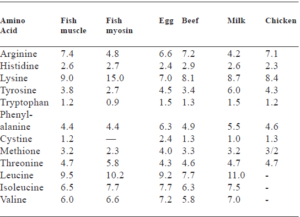
Anim A aku P roteins
F adalah H Meal : Fish meal is the ideal protein item having all the essential amino acids required in fish feeds. It has been reported that fishes feed with fish meal have yielded better results when compared to the fishes fed with soyabeen.
S ilk w atau M P ke atas A e : In Japan intensive farming of carps in cages and floats is achived by feeding with silkworm pupae and the conversion rate worked out to 2. It has been revealed that fishes fed on silkworm pupae have yielded better growth when compared to the fishes fed on a mixture of rice bran and mustard oil cake in the ratio 1 :1. It has been observed that a mixture of animal proteins gave better weight grain and feed conversion than a mixture of plant proteins or any of the proteins tested alone. It has also been reported that plant proteins mixed with 10 to 15% of animal proteins could be utilized as the basic ingredients in formulating the artificial feeds under intensive fish farming.
Pla n T P roteins
They are deficient in lysine and methionine content, and to avoid aminoacid imbalance need supplementation with animal protein. The most favoured items generally used for carp feeding are different oil cakes, and grain fodders. It has been reported that in the composite fish culture of Indian major carps and exotic carps high fish production has been achieved by using a mixture of rice bran and mustard oil cake in the ratio 1 :1. The nutritive value of oil cakes and grain feeder is dependent on their quality. The quality of prepared feeds will be reduced when their fact content is 10-20%. The overall protein content will be used when the solvent extracted oil cake and rice bran are used as feeds.
L ea F P roteins: Information regarding the use of leaf proteins in fish nutrition is, as yet, negligible except for somevegetable eating species, but because of their high production and competitive economy in agricultural industries, they may in the near future occupy a prominent place in fish feeds after adequate processing involving separation of pigments, flavour and toxins.
Alga e P roteins: Algae constitutes the feed of certain varieties of Cultivable fishes. Chlorella spp. have been found to contain all the essential amino acids and protein of desired nutritional and functional and functional quality can be obtained by selecting the suitable media for their culture and adjusting the harvesting time. It has been noticed that feed pellets made of Chlorella resulted in the higher yields of Oreochromis mossambica.
Singl e Cel aku P R Hai remaja : the proteins derived from yeast, bacteria, fungi or algae grown on a variety of substrata, which include hydrocarbons like crude oil, gas oil, natural gas, coal, carbohydrates such as cellulose, grain, sulfite liquor, molasses and organic wastes constitute yet another source of protein. It has been reported that satisfactory results are achieved when yeast is grown on liquid hydrocarbons as a substitute for a part of fish meal.
Carbo H ydrat e S
They are diets of starch and serve as a major source of dietary calories in artificial feeds. Most of the cultivable fishes like carps and mullets are omnivorous taking in considerable amount of vegetable matter and are therefore, well adapted physiologically to digest starch. Digestibility of starch is reported to be 30-90%. Rice bran and wheat bran which are the main starchy diets used for cultivable fishes are found to the highly digestible. Potatoes can be used as substitute for grain. It has been reported that the digestability of potato starch, xylan and algin as 85, 66 and 53% respectively. The ratio of protein to carbohydrate in the feeding of 1 :7 or 1 :8 which gives a wide scope to utilize feeding of cheap carbohydrate diets as long as protein in the natural food is sufficient for growth. While formulating the balance diets, carbohydrate and protein ratio needs a careful manipulation so as to spare the proteins for growth and carbohydrate to serve supplying the dietary calories. The diet of certain fishes is said to be nutritionally complete when it contains 39.9% of proteins and 18.2% carbohydrates with food conversion rate of 1. 4-2. 4:1.
F at S
The fishes cultivated in warm waters utilize the fats in a better way. Stimulation has been noticed in the growth of fishes when cod liver oil is added to the diet. But it is known whether lipids or other components of the oil are responsible for such a type of stimulation of growth. As excess fats get deposited in liver, trout ration is usually prepated with less than 10% fat content. It has been reported that in order to yield better results of growth and to reduce mortality in rainbow trout fatty acids with Omega-3 configuration between 3-10% are required. The increased fish yield was found maily due to accumulation of body fat in sorghum fed fish as long as protein was not a limiting factor. Therefore it is clear that provided the protein component in the diet is sufficient, fats can be advantageously used in carp feeds for gaining added yields as well as sparing proteins for growth.
mi C ro n ut R yaitu n T S
The growth stimulating micronutrients cannot be substitute for food but their presence in general required to formulate a balanced diet for improving the protein assimilation. In spite of the presence of proteins, growth rate may be slow due to the absence of micronutrients.
V Saya tamin S
Salmon and trout require all the seven vitamins for their growth. Cultivae carps need pyridoxine riboflavin and pantothenic acid. The carps indicated better results when they werefed with 0.8 mg/kg/day of cobalt, which is a part of vitamin B12 concerned with nitrogen assimilation and synthesis of haemoglobin and muscular protein and addition of 4% fodder yeast. Addition of cobalt chloride increases the survival and growth of cultivable fishes.
A n tibioti C S
The intensive fish farming results in causing diseases to fishes. The role of antibiotics in stimulating protein metabolism depends upon the quality of diet and best results have been obtained by feeding 20, 000 units of terramycin to carps every three days resulting in the growth increase by 9.5% and a fodder saving of 10.5%.
Digestibili T kamu
Natural food items of fishes are highly nutritious, reflecting a simple and regular relation between protein, fat, carbohydrate and their utilization, but in case of artificial feed stuff, elaborate experimental analysis have to be carried out to know their digestibility and utilization co-efficients. Digestion co-efficients are generally measured in terms of nitrogen and calories.
R el A ti Hai n H Saya P B et w ee n Fo Hai D A n D G rowth
Food supply is the most potent factor affecting the growth of fishes and with sufficient quantity and adequate quality of food, fish attain the maximum size. It is not easy to measure accurately the food intake of fishes.
Some of the food is used to replace the tissues broken down in catabolic processes i.e., to provide for basal metabolism. Basal metabolic rates can be measured by studying the respiration of anaesthetized fish. The activities of fish is influenced by the environmental conditions and requires energy. The energy for these activities is obtained from food. Fish can gain weight only when they eat more food than is necessary to satisfy their basal metabolism and to provide energy for their activity. The fish require particular ration for the upkeep of the routine metabolism known as maintenance requirement. Fish only gain weight from surplus food after fulfilling the maintenance requirements. In case of food shortage, fish lose weight, and in case of starvation the metabolic activities are lowered to some extent.
The use of vitamin B12, cobalt nitrate and extract of ruminant stomach give good results in survival of the major carp fry. It is found that 50 kg B12 and cobalt nitrate in combination with extract of goat stomach enhance the survival of carp fry upto 5%. Addition of yeast, also promotes growth. Yeast along with vitamin B12 and B-complex also enhance the survival rate significantly. The knowledge of conversion rate is very essential for the selection of fish feed. The conversion rate is expressed as a ratio between food consumed for increase per unit weight gained by the body discounting the food requirement by the for its maintenance and energy requirement.
Quality of feed Conversion rate =Weight increase (flesh) 6.8 Supplementary Feeding
In the raising of stable fishery, there is a need for regular supply of sustained and balanced food for growin fish. Suitable food has to be provided for healthy growth of fish. Special food arrangement is required for raising good crop of quality often very necessary. Namun, artificial feeding of fish in rearing and stocking ponds may not be economical in India at present. Some fattening food may, Namun, be desirable a few days before the harvesting and marketing of fish. To ensure sustained growth, artificial food has to be supplemented at times of natural food scarcity in ponds.
The food which is added in the pond for better growth of fish is supplementary food. The typical supplementary foods are rice bran, groundnut oil cake, bread crumbs, fish meal, maize power, broken rice, soyabean cake, peanut cake, corn meal, cottonseed oil cake, oats, barley, rye, kentang, coconut cake, sweet potatoes, guinea grass, napier grass, wheat, silkworm pupae, left-over animal feeds and animal manures.
The kind of extra food depends on the type of fish. For example tilapia eat almost anything including all types of supplementary foods. The silver carp eat only phytoplankton, even at the marketable size.
Supplementary feeds given to different cultivated fishes of diverse feeding habits are:
- Vegetable feeds such as leaves, grasses tubers and roots starches.
- Oil cakes such as mustard, groundnut, til, coconut etc., and other residues.
- Grain fodders like wheat bran, Nasi, lupine, soyabean, jagung, rye, barely etc.
- Feeds of animals origin such as fish flour, fish meal, fresh meat from warm blooded animals blood, poultry eggs shrimps, crabs, kerang, snails etc.,
- Additives such as vitamins and minerals.
Fish may also feed directly on dung applied as manure in ponds. The selection of supplementary feed depends on number of factors such as:
- Ready acceptability to fish
- Easy digestibility
- High conversion value
- Easy transportability
- Abundant availability
Of all these, ready acceptability by the fish and its conversion ration and the involved costs are the most important. It should be a balanced one with adequate protein, fat, carbohydrate, mineral and vitamin contents. The rate of food conversion depends on:
- quality of supplementary feed
- stocking density of fish
- size and age of the fish stock
- environmental factors such as temperature, oxygen tension, water etc.
- The method of feeding (the spreading and frequency of distribution etc.)
In the raising of stable fishery, there is a need for regular supply of sustained and balanced food for growing fish. Suitable food has to be provided for healthy growth of fish. Special food arrangement is required for raising good crop of quality often very necessary. Namun, artificial feeding of fish in rearing and stocking ponds may not be economical in India at present. Some fattening food may however, be desirable a few days before the harvesting and marketing of fish. To ensure sustained growth, artificial food has to be supplemented at times of natural food scarcity in ponds.
The food which is added in the pond for better growth of fish is supplementary food. The typical supplementary foods are rice bran, groundnut oil cake, bread crumbs, fish meal, maize powder, broken rice, soyabean cake, peanut cake, corn meal, cottonseed oil cake, oats, barley, rye, kentang, coconut cake, sweet potatoes, guinea grass, napier grass, wheat, silkworm pupae, left-over animal feeds and animal manures.
Relati Hai nshi P betwe e n sup P lemen T ar kamu F e e D NS D fis H prod kamu ctio n di dalam berbeda budaya sistem
In the natural environment, when the growing fish number and natural fish food organisms are in equilibrium, it is need not necessary to provide supplementary feed. When the culture system is intended to go in for more fish production, fertilizers and supplementary feeds should be supplied. In the extensive culture system, the fish production can be
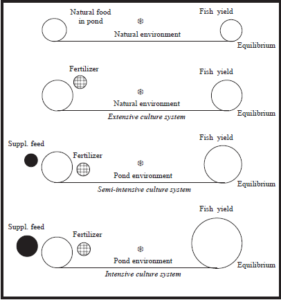
Relationship between supplementary feed and fish yield.
enhanced by adding little amount of organic and inorganic fertilizers, whereas in semi-intensive culture systems the fish production can be enhanced by adding the fertilizers along with sufficient amount of supplementary feed. In intensive culture systems the fish production can be enhanced more by using large amount of supplementary feeds (Fig).
The fish yield can be enhanced by increasing the supplementary feed from the extensive to intensive culture practices (Fig).
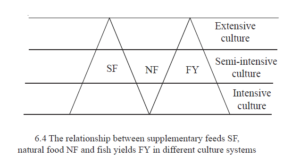
F Hai rmulate D biaya D
Rearing of spawn, fry and fingerlings until they become stockable size and their subsequent culture in grow out ponds require appropriate and nutritionally balanced diet for enhancing production. This has been one of the essential requisites in the development of aquaculture. The advantages of formulated feeds are:
1. Proper formulated feeds are a replica of exact nutritional requirement of fish. Karena itu, by understanding the nutritionally well balanced feeds which could be formulated using low cost feed stuff availability locally.
2. Ingredients of formulated feeds can complement one another and raise the food utilization rate.
3. Proteins can supplement one another so as to satisfactorily improve most of the essential amino acid content of the feed, thereby raising the protein utilization.
4. Large quantities of feeds can be prepared at a time with good shelf-life so as to be convenient to preserve, which can be used at the time of supplementary feeding.
5. Feed ingredient sources can be broadened with preferred and less preferred ingredients along with additives like antibiotics and drugs to control fish diseases.
6. High efficiency of feed can be achieved by judicious manipulation of feed ingredients and can be made commercially feasible.
7. By adding a binding agent to produce pelleted feeds, the leaching of nutrients in water is diminished and wastage is reduced.
8. Dispersing over large farm areas is quite possible as formulated feeds are convenient to transport. These are suitable for automatic feeding, for which automatic feed dispensing devices could be successfully employed.
Formulated feed are mainly of two types. Mereka:
a) Suspension – It is liquid feed, prepared with Acetes, Squilla and clams. Its preparation is discussed in chapter VG.
b) Pelletised feed – This is a nutritionally well balanced solid feed and can be used off the shelf as and when required. This type of feed contains only ingredients of precisely known composition and for this reason such diets are very expensive.
Untuk M ulatio n Hai F feed :
Though natural fish food is available to fish, supplementary feeds are required to get more yield. The supplementary feed is a combination of different ingredients both from plant and animal origin and it can be administered in different forms. The conventional method is by broadcasting the feed in dry powder form in the fish pond. Broadcasting has its own disadvantages. Much of the feed is likely to be wasted by getting dissipated in water due to the disturbance causes during the feeding of fish. Further, supplementary feed in powder form can not be stored for a longer period. Kalau tidak, the feed is given in paste form. To avoid the instability of these ingredients, the feeds are now prepared into dry type of pelleted feeds. Dry pellets are easy to handle and store, have longer shelf-life and are free from accumulation of lethal toxic materials like alpha-toxins. Further, such pellets reduce wastage on feeding and ensure uniform composition of the various nutritional components. Owing to these advantages, the fish culturists are assured of maximum return when they use dry pellets.
The ingredients used for formulating fish-feed should be based on their qualities such as protein content, energy level, type of amino acids, etc. Major ingredients commonly used are corn meal, groundnut oil cake or mustard oil cake, soyabean powder, rice bran, wheat bran, fish meal, fish offal, shrimp meal, crab meal, blood meal, slaughter-house waste, tannery waste, silk worm pupae, cow dung, tapioca flour, wheat flour, wild leguminous seed kernels, dried algae, gula tetes, etc. Besides, dried yeast in the form of flour also serves as a rich food ingredient with protein and many B-group vitamins.
In many fish feeds, protein is the most expensive portion and is invariably the primary substance. The energy level of the diet is adjusted to a desired level by the addition of high energy supplements, which are less expensive than protein supplements. The rectangle method is an easy way to determine the proper dietary proportions of high and low-protein feeds for use in the dietary requirements of fish. Sebagai contoh, if rice bran and groundnut oil cake are to be used as chief ingredients to prepare fish feed with 40% protein, the procedure is as follows:A rectangle is designed and the above mentioned ingredients are put on the two left corners along with their protein contents.
The desired protein level of feed is placed in the middle of the rectangle. Next, the protein level of the feed is subtracted from that of the already used ingredients placing the answer in the opposite corner from the feed. This could be elucidated by an example. That is, for the preparation of 36.8 kg of fish feed with 40 percent protein, 3.5 kg of rice bran and 33.3 kg of groundnut oil cake are added. In other words, for the preparation of 100 kg of fish feed with 40 percent protein, 9.5 kg of rice bran and 90.5 kg of groundnut oil cake are needed.
P ganti rugi Hai F pe aku lete D fis H F ilalang :
The required quantities of the various components are dried, powdered and mixed. The mixture is kneaded well adding minimum quantity of water to form a soft dough. The dough is then cooked for 30 minutes in steam under pressure at 1 kg/cm2 (15 lbs/inch2). The dough after cooking is allowed to cool in a spacious tray and the prescribed quantities of chap fish oil or vegetable oil and vitamin and mineral mixture are thoroughly mixed in the dough. Akhirnya, it is pressed through a hand pelletiser having a perforated disc with 2 mm or larger holes depending on the size requirement for different finfish and shellfish. A semi-automatic pelletiser powered by a 0.25 HP electric motor suitable for the production of pelleted fish feed having a rated output of 10 kg/hr has been designed. The noodles are dried in the sun and broken into pieces of about one cm, Care should be taken to see that the pelleted feeds are free from moisture. Namun, a maximum moisture content of 15% may be allowed in the pellets. Sun-dried pellets can be stored for a period of even one year.
Man A geme n T Hai F biaya D di dalam G
Proper management of feeding in aquaculture practice is important for resulting in maximum yield, feed utilisation efficiency and to reduce the waste of feed as well as the cost incurred for feed to a certain extent. The management of feeding involves the feeding rate as well as the frequency of feeding at a fixed place and fixed time. These feeding rates and feeding frequencies vary with the species, size of fish, water temperature and dietary energy levels in the feed (Chiu, 1989). Usually the feeding rate is adjusted either at a given percent of body weight. The former feeding rate is very common and prevalent. Feeding frequency is also positively related to the growth of fish. Fish either at short food chain at low trophic niche or at the higher feeding regime naturally grow faster although there is a maximum ingestive limit at which the increase in growth is negligible. This is defined as the optimal feeding frequency which differs from size offish, sex, gut morphology of the species and meal size of the artificial feed.
The feeding management concept of fixed quantity and quality is to be oriented as the daily food consumption in fish is variable. Such daily variations in feed intake is bound to influence the digestibility of the fish. Hence, the management of feeding schedule should match with the diurnal variations of digestibility of the fish for proper feed utilization and assimilation efficiency. Karena itu, mixed dietary regimes of low and high protein in feeding can provide a means of reducing feed costs and marginal cost of fish yield.
S kamu ppl e men T ar kamu biaya D di dalam G Saya n n kami e R kamu P ond S
Though carp hatchlings predominantly feed on minute plankton, yet the supply of supplementary feed in the form of finely powdered 1:1 ratio of groundnut oil cake and rice bran to the hatchlings or fry results in better growth in nursery pond. The nursery ponds are supplied with supplementary feed equal to double the weight of spawn from the first to fifth day and then the amount is doubled till fifteenth day. Feeding should be stopped a day before harvesting. The feed should contain 40-45% protein, 25-30% carbohydrate. Cobalt in minute quantities of 0.01 mg/fish/day along with supplementary feed enhances the survival and growth rate of hatchlings. The mixture of silk worm pupae, groundnut oil cake and wheat bran in rohu and mrigal, and soyabean in catla cultures gave good results.
S upp aku em n tar kamu F e edi n G Saya n R telinga Saya n G P ond S
The fry are provided with supplementary feed in the form of groundnut oil cake and rice bran at the rate of 1% of the body weight till they grow to fingerlings.
Su P plem e ntar kamu fe e keriuhan G Saya n stok k di dalam G pond S
The supplementary feeds like oil cake and rice bran must be supplied to the fish in stocking ponds. Oil cakes like mustard or groundnut and rice bran in 1:1 ratio should be given to fish daily at the rate of 1-3% of the body weight. Aquatic weeds are given to grass carp. Feeding is carried out preferably in the morning hours. It is always better to assess the density of plankton before feed is supplied. If the plankton is below 2 ml/50 1, only then the supplementary feed should be given. The feed should be supplied at a fixed place in a tray suspended in the water. The grass carp should be given aquatic weeds on a bamboo platform.
S um M ar kamu
A variety of natural fish food organisms are found in a waterbody, which depend on the nutritive nature of the waterbody. The natural food provides the constituents of a complete and balanced diet.
The natural fish food organizims are plankton, oligochaetes, insects larvae, molluscs, tadpoles, weeds, dll.
The plankton is divided into two main categories – phytoplankton and zooplankton.
The phytoplankton drift about at the mercy of the wind and water movements. Algae consist of three major classes which form the main food in phytoplankton. These are chlorophyceae, cyanophyceae and bacillariophyceae.
The most common organisms in zooplankton are protozoans, crustaceans and rotifiers
Bioenrichment is the process involved in improving the nutritional status of live feed organisms either by feeding or incorporating within them various kinds of materials such as microdiets, microencapsulated diets, genetically engineered baker’s yeast and emulsified lipids rich in w3HUFA (Highly Unsaturated Fatty Acid) together with fat soluble vitamins.
Food supply is the most potent factor affecting the growth of fishes and with sufficient quantity and adequate quality of food, fish attain the maximum size.
The food which is added in the pond for better growth of fish is supplementary food. The typical supplementary foods are rice bran, groundnut oil cake, bread crumbs, fish meal, maize powder, broken rice, soyabean cake, peanut cake, corn meal, cottonseed oil cake, oats, barley, rye, kentang, coconut cake, sweet potatoes, guinea grass, napier grass, wheat, silkworm pupae, left-over animal feeds and animal manures.
Formulated feed are mainly of two types. Mereka:
a) Suspension – It is liquid feed, prepared with Acetes, Squilla and clams. Its preparation is discussed in chapter VG.
b) Pelletised feed – This is a nutritionally well balanced solid feed and can be used off the shelf as and when required. This type of feed contains only ingredients of precisely known composition and for this reason such diets are very expensive.
Source:AquaCulture






